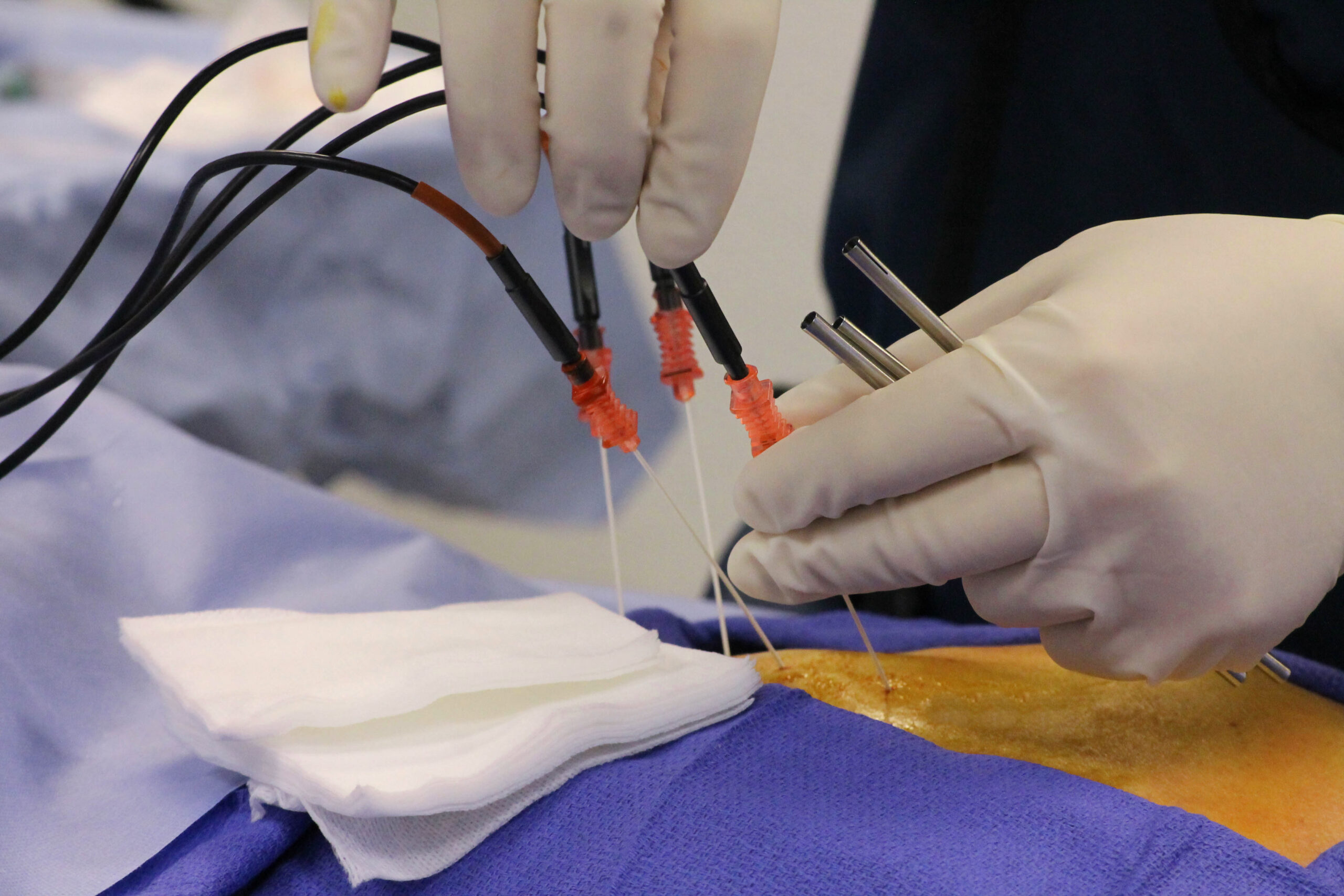
02 Sep How Radio Frequency Ablation Works for Pain Relief
Radio frequency ablation, also called RFA, is a medical procedure that uses controlled heat energy to target specific nerve tissues responsible for transmitting pain signals. It effectively reduces neck pain, back pain, and other chronic pain issues. Here is more information on the technical process behind RFA:
Understanding Radio Frequency Ablation
Radio frequency ablation operates by generating controlled electromagnetic energy at specific frequencies. The procedure utilizes a specialized needle electrode that delivers this energy directly to targeted nerve tissues. These electromagnetic waves create molecular friction within the tissue, generating heat that destroys the part of the nerve that causes pain.
The heating process creates thermal coagulation of nerve fibers, specifically targeting the sensory components responsible for pain transmission. This controlled temperature application disrupts the nerve’s ability to conduct electrical impulses, effectively interrupting pain signal pathways without causing widespread tissue damage. The precision of the heating allows for selective targeting of problematic nerve structures while preserving surrounding healthy tissues.
Imaging guidance systems, such as fluoroscopy or ultrasound, provide real-time visualization during the procedure. These technologies allow physicians to position the electrode precisely at the target location and monitor the ablation process as it occurs. The combination of controlled energy delivery and imaging guidance enables accurate treatment of specific anatomical structures.
Exploring the Nerve Response
Radio frequency ablation achieves pain relief through specific physiological mechanisms that alter nerve function. The thermal energy disrupts the protein structures within nerve cell membranes, preventing normal electrical conduction along the nerve fiber. This disruption effectively blocks the transmission of pain signals from the treated area to the brain.
The procedure specifically targets sensory nerve fibers while attempting to preserve motor nerve function. Sensory nerves typically have different thermal sensitivity compared to motor nerves, allowing for selective ablation when proper temperature control is maintained. This selectivity helps minimize functional impairment while addressing pain transmission.
Nerve regeneration processes begin following RFA, with different types of nerve fibers regenerating at varying rates. Sensory nerve fibers may begin regeneration within weeks to months after treatment, which explains why pain relief from ablation procedures is typically temporary rather than permanent. The regeneration timeline varies among individuals and depends on various biological factors.
Getting the Treatment
The RFA procedure typically begins with local anesthesia administration at the treatment site. A physician creates a small skin entry point and advances the electrode needle toward the target nerve location using imaging guidance. Proper needle positioning requires precise anatomical knowledge and careful manipulation under continuous visualization.
Nerve stimulation testing occurs before ablation to confirm proper electrode placement. Low-level electrical stimulation through the electrode can reproduce the patient’s typical pain pattern, verifying that the correct nerve structure has been located. This stimulation testing helps confirm targeting accuracy before proceeding with the thermal treatment.
Post-ablation monitoring includes immediate assessment of the treatment area and evaluation for any adverse reactions. Once the electrode is removed, the entry site receives appropriate wound care. Patients typically undergo a brief observation period before discharge, with specific post-procedure instructions provided for optimal recovery.
Find a Pain Management Clinic
Radio frequency ablation provides pain relief through controlled thermal disruption of nerve conduction pathways. The procedure utilizes precise electromagnetic energy delivery, imaging guidance, and temperature monitoring to target specific nerve structures. The thermal effects interrupt pain signal transmission through physiological mechanisms that temporarily alter nerve function. Consult with a pain management specialist to see if this treatment is right for you.
- The Benefits of Group Programs for Weight Loss
- Exploring the Efficacy of Tirzepatide in Weight Loss Programs
- Your Topics Multiple Stories: A Complete Guide to Creating, Organizing, and Sharing Multi-Story Content
- Effective Home Remedies for Hemorrhoid Treatment
- Signs You Need an Eye Exam Sooner Rather Than Later

No Comments